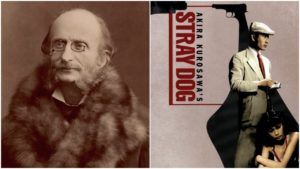
Opera Meets Film: Akira Kurosawa Pulls Off a Masterstroke With Offenbach’s Barcarole in ‘Stray Dog’
By David Salazar“Opera Meets Film is a feature dedicated to exploring the way that opera has been employed in cinema. We will hone in on a selection or a film in its entirety, highlighting the impact that utilizing the operatic form or sections from an opera can alter our perceptions of a film that we are viewing. This week’s installment features Akira Kurosawa’s “Stray Dog.”
At the climax of one of the most fascinating sequences in Akira Kurosawa’s “Stray Dog,” the filmmaker suddenly brings in the most famous piece of music from Offenbach’s “Les Contes d’Hoffmann.”
Rookie detective Murakami is on the prowl, looking for a gun that was stolen in the film’s opening scene. He’s been told to check out the alleyways in a central market for some people that might be selling off illegal weapons. He’s even told that if he looks “desperate,” someone will eventually come to him.
So he disguises himself as a street dweller and heads to the market where for close to nine minutes, Kurosawa has him walk around in search of some clue, some discovery about where he might find his missing gun.
The filmmaker, knowing well that this sequence could prove exhaustive, uses all the visual tricks in the book, eventually dissolving images over one another to emphasize how much of a blur this all is to Murakami. Kurosawa then starts repeating the techniques, allowing the audience to feel Murakami’s exhaustion in this lengthy and fruitless pursuit.
Then at the peak of it all, he comes across a small stand with a lone woman. Suddenly the music of the Barcarole starts up as Murakami engages the woman for conversation. She thinks he propositioning her as a prostitute, until he shows her a gun, demanding she tell him where he can find more. This ultimately proves the end of the sequence, ending on a wide shot from behind all the action, Murakami leaving into the crowd, the music from Offenbach’s opera continuing on.
We don’t hear the voices in this version of the piece and it undoubtedly stands out amongst the other scoring in the Japanese film noir. But it’s also the perfect piece of music for a number of reasons.
The first of these is how it sticks out so vibrantly amidst the lengthy sequence. Just when it seems that you might lose all interest in what is going on, Kurosawa pulls out the tune, suddenly providing the sequence with a much-needed change of pace and tone. It’s a masterstroke of filmmaking, a director building a unique emotional tension with his viewer and pulling it like a rubberband as far as he can. And just before it snaps, he eases up in a very delightful manner. This sense of relief is further supported by the visuals where after being thrown into claustrophobic crowds, we see a lot more open space.
But then there’s the piece itself with its repetitions. The melody just goes on and on like one big loop with no seeming end. So while Kurosawa is providing some degree of emotional relief from the drawn out search, the music he chooses is also commenting on the circumstances, letting the audience know that Murakami is definitely not out of the woods just yet and that his ongoing search will be prolonged. That final shot of Murakami disappearing back into the crowd with the music repeating itself punctuates this notion.
It’s a brilliant double hander that Kurosawa is playing in the use of this music; it provides a transition for the audience out of a challenging sequence but without letting go of the narrative tension it has already established.
Categories
Opera Meets Film

